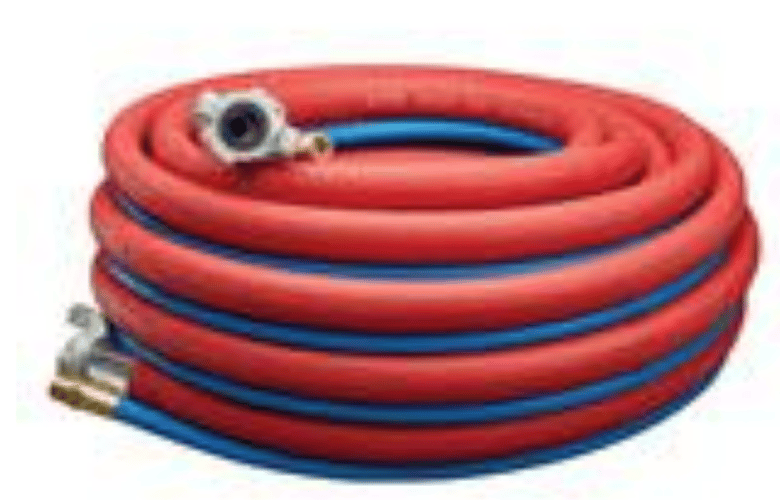Save Your Workers' Lungs & OSHA's Staggering Penalties for Violations of Crystalline Silica Rules

Last year, we wrote about OSHA's new enforcement focus on violations of crystalline silica rule, which became more stringent in 2017. Since the enforcement is ramping up, and fees associated with non-compliance automatically go up each year, we thought a re-post of our last year's blog about using the wet method suppression is relevant. Check out the video added at the end of the blog.
|
Parker 7084 Series Twinhammer hose conveys both air to power the jackhammer and water to spray down the work area to supress RCS. Use for compliance wtih OSHA RCS laws. Use Conversion Kit to upgrade virtually any jackhammer to OSHA compliant tool. |
Since September 2017, OSHA has required the construction industry to comply with new regulations for respirable crystalline silica (RCS) exposure in the workplace. This new standard was enacted to protect workers from airborne silica particles that are generated by grinding, cutting, drilling, sawing and crushing materials such as stone, rock, concrete, brick and mortar. Inhalation of these particles can cause severe health issues including silicosis, lung cancer, COPD and kidney disease. In response, Parker developed the 7084 Series Twinhammer hose and a conversion kit to convert virtually any jackhammer to a tool compliant with OSHA RCS rules. |
Complying with OSHA’s RCS standard can present several challenges for your company. Each type of equipment creates different levels of airborne silica particles, requiring specific dust controls for use of that equipment at the job site. OSHA provides fact sheets on their website that outline approved dust suppression methods and tips for meeting their standards. If these requirements are met, it will not be necessary to take samples of silica levels at the job site, which would need to be evaluated by a lab that meets the standard’s qualifications.
Some companies may find that their current equipment is not sufficient for preventing unsafe levels of RCS exposure. They may attempt to use inefficient dust suppression methods such as using a separate water hose directed at the point of contact between the jackhammer and the material, which can have inconsistent results and require more workers to accomplish the same task. Adapting existing equipment to combine air and water lines typically requires clamps or straps that can loosen or snag, becoming potential safety hazards that must be routinely inspected and reapplied. Bonded twin-line hose solutions like Parker’s Twinhammer hose help companies meet OSHA standards, while creating a safer and more efficient work environment.
The penalties associated with RCS standard non-compliance can be significant. If they do not meet the standard’s requirements, companies can expect fines that range from $12,675 (first violation) to $126,749 (willful or repeated violations). Fines can also be multiplied daily if the issue is not solved by the abatement date set by OSHA. Here are some examples of penalties imposed on companies who were found to be in violation of RCS safety standards (Source: Rental Management Magazine):
- In May 2016, a citation of $62,370 was leveled against a Wisconsin company that “overexposed three workers to silica.” OSHA stated that “one employee’s exposure was determined to be more than twice the recommended time-weight allowance.”
- A different Wisconsin company was cited in August 2016 for $56,950 in penalties for overexposing employees to RCS, excessive noise and carbon monoxide, and for failing to implement an appropriate training program.
- A $159,631 penalty was proposed in November 2016 when OSHA found workers in Ohio exposed to air contaminants including silica and other hazards.
These violations were discovered before implementation of the new standard, which is stricter about dust suppression methods and allowable levels of airborne silica particles. While implementing new equipment and providing appropriate protection for workers can create some short term downtime and costs to your company, these challenges must be balanced against the long term health benefits of creating a safe work environment and the much steeper fees associated with OSHA non-compliance penalties.





